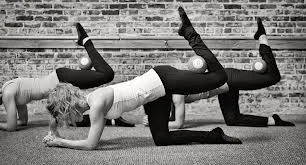Motivate Winning Teams Through Perspective Training
/In my last post, 'Walk In Their Shoes To Create Better Relationships And Teams', I shared the the power of learning perspective and truly connecting to people. Here is a personal story of the success I had with perspective training.
While managing the service delivery and support teams at Geckotech, I held weekly training sessions on soft skills, positive tone, team building, and such. It was a great way learn how to better service customers, carefully navigate difficult conversations, and truly understand each other as a team.
First comes the struggles
As a team, we were very good at meeting the customer deadline; however, there were times we struggled to keep all members of the team on 'Happy Street'. During those times, there were some heroic efforts of rushing each other to make that target date. If you provide a great customer experience while breaking your back or harming the team, the result is not ideal. I want win/win/win - customers/employees/vendors!
Then the opportunity
I asked what motivates them to drive reward programs that aligned with each person. We are all motivated in different ways because of our own perspectives. When we understand the perspectives of others, we can connect to the ‘root cause’ of the behaviors. My goal was to motivate them to provide the best customer experience AND team experience.
To learn and improve
After learning the motivation of the team, I created a points program that could be exchanged for gifts (some people prefer gift to money so they don’t feel the need to spend on bills…), credit card (obvious reasons), or time off (for those with kids that often had to take more time off on school holidays, for example). The points were awarded for the 'Ideal' and 'Above and Beyond' behaviors. It was not a replacement for doing normal daily activities.
Working together
One way ‘The Team’ could jointly earn points was after each new customer implementation. The team had a customer install target date along with internal milestones that aligned to the ideal time to complete the work required in each role. The best score for the implementation was awarded when All Dates AND Key Performance Indicators were met. If the team only met the install target date to make the customer happy, it was not enough. They needed to meet the internal dates to make everyone happy. If one date was missed, it added extra pressure to other roles - which is not working together.
To create the ideal win/win/win
At the end, each person completed a survey on ‘THEIR PERSPECTIVE’ of the implementation. We had a review meeting to discuss the results. It was a great exercise for the team to learn the perspectives of each role. In the end, it made the team respect one another more and work better together to provide the best customer experience.
Yours Truly
ThePukkaPanda































